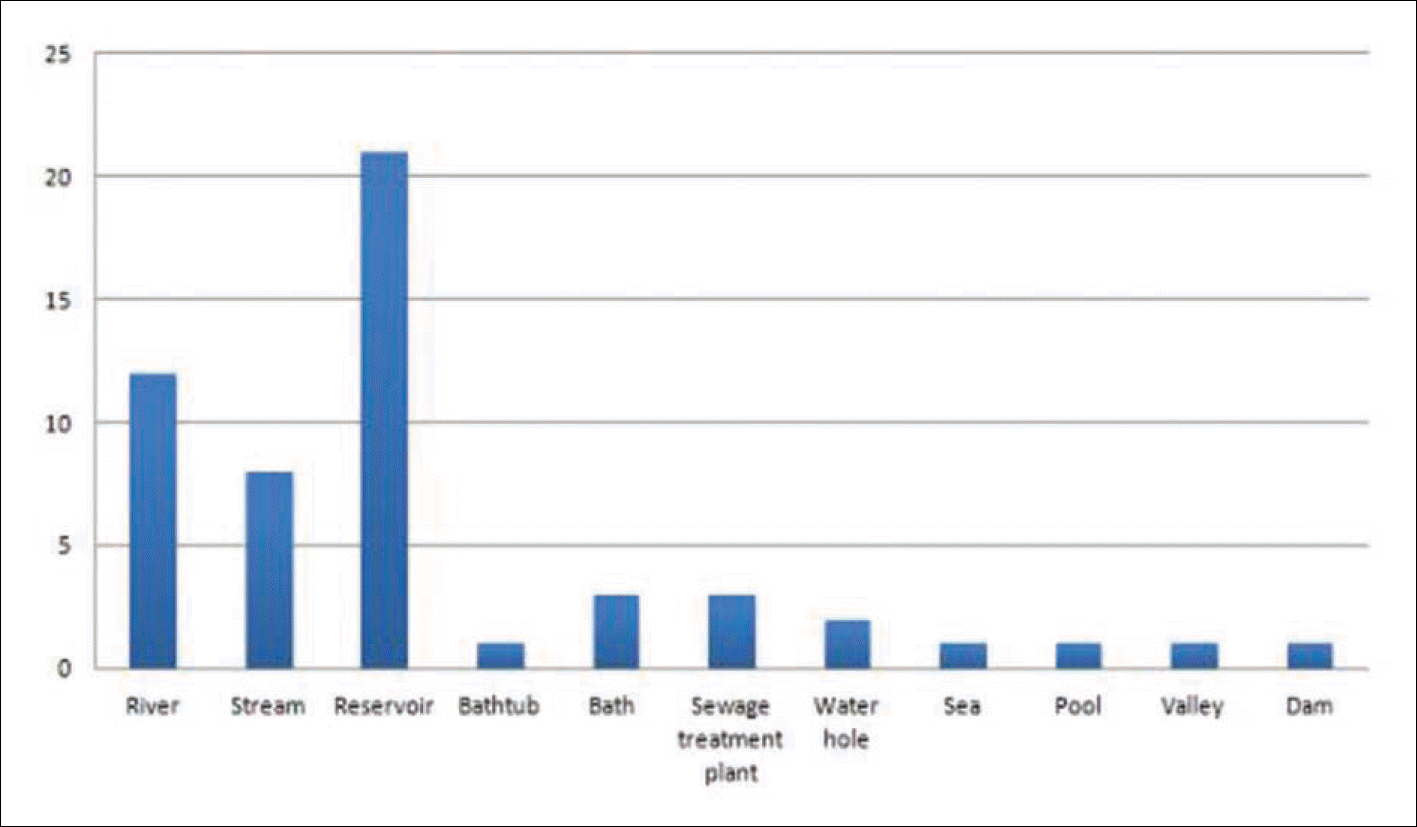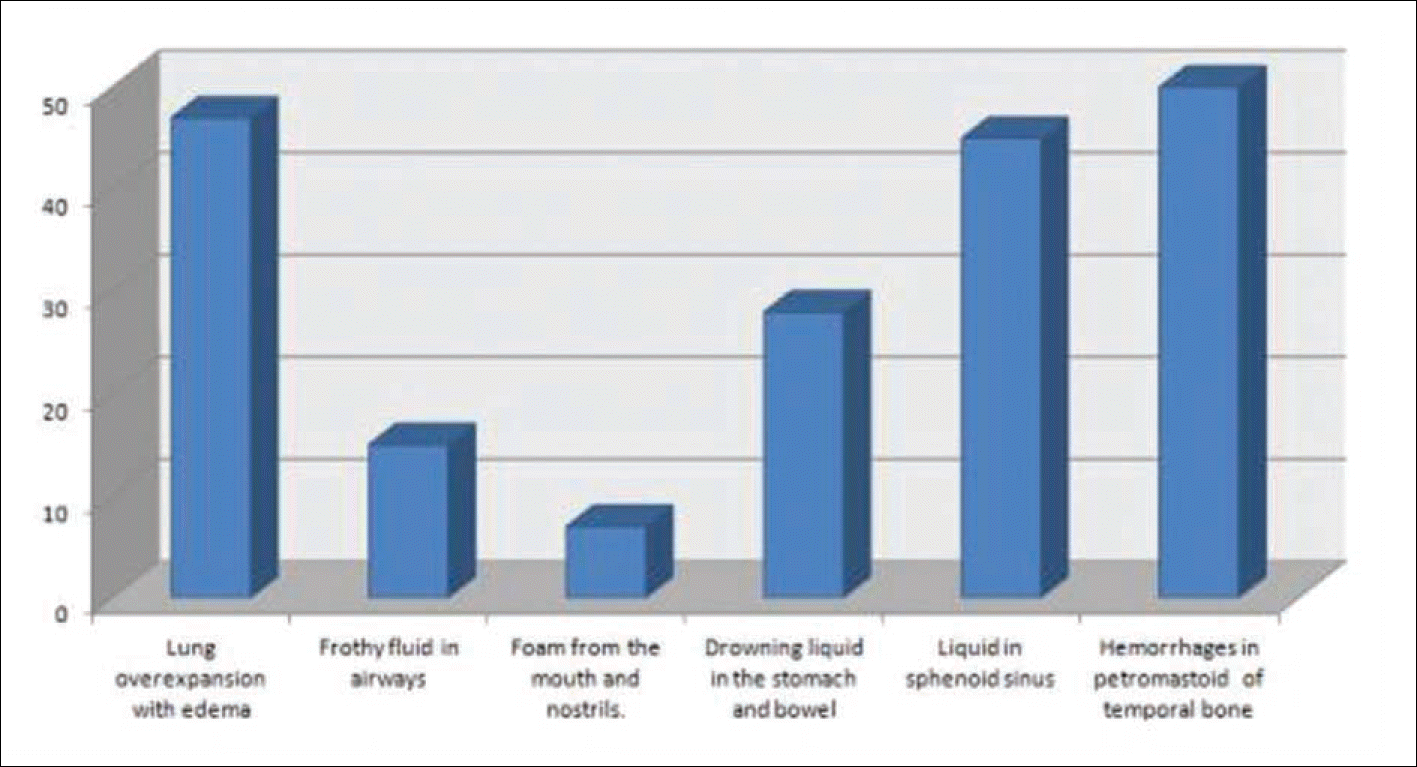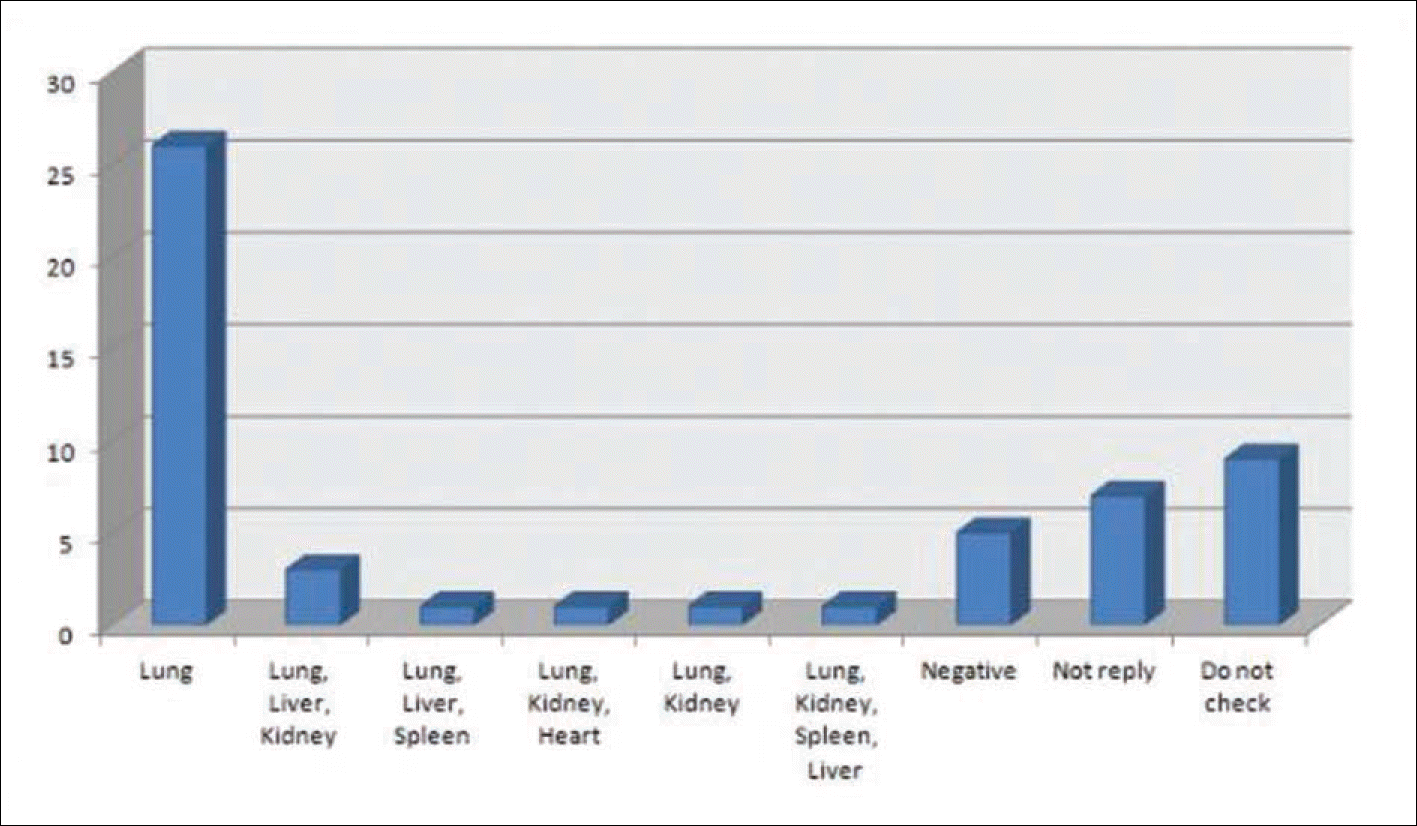Abstract
The diagnosis of death by drowning is one of the hardest challenges in forensic pathology. Circumstantial factors and physical evidence such as autopsy findings are both important in drowning. However, drowning findings are not specific and no laboratory tests can specifically detect drowning. It has been suggested that fluid in the paranasal sinuses, especially the sphenoid sinuses, is a sign of drowning, in conjunction with other autopsy findings. This study aimed to determine the frequency of detection of fluid in the sphenoid sinuses in cases of death by drowning. From 2003 to 2012, 54 autopsied cases of drowning were selected and reviewed in the Department of Forensic Medicine, Kyungpook National University School of Medicine, Daegu. The most common autopsy findings were foaming at the mouth and nostrils (13%), frothy fluid in the airways (28%), pulmonary edema with overexpansion of lungs (87%), drowning liquid in the stomach and duodenum (52%) and hemorrhages in the petromastoid part of the temporal bone (93%). Fluid in the sphenoid sinuses was detected in 45/54 cases (83%). The plankton test was positive in 33/54 cases (87%), however, in 26 of these cases, plankton was found only in the lung tissue. In conclusion, detection of fluid in the sphenoid sinuses could be a diagnostic sign for death by drowning. The sphenoid sinuses are easily accessible on autopsy, so it is highly recommended to look for fluid in the sphenoid sinuses when performing an autopsy on bodies recovered from water.
REFERENCES
1. van Beeck EF, Branche CM, Szpilman D, et al. A new definition of drowning: towards documentation and prevention of a global public health problem. Bull World Health Organ. 2005; 83:853–6.
2. Idris AH, Berg RA, Bierens J, et al. Recommended guidelines for uniform reporting of data from drowning: the “Utstein Style”. Circulation. 2003; 108:2565–74.

3. Idris AH, Berg RA, Bierens J, et al. Recommended guidelines for uniform reporting of data from drowning: the “Utstein Style”. Resuscitation. 2003; 59:45–57.

4. Lawler W. Bodies recovered from water: a personal approach and consideration of difficulties. J Clinic Pathol. 1992; 45:654–9.

5. Davis JH. Bodies found in the water. An investigative approach. Am J Forensic Med Pathol. 1986; 7:291–7.
6. Kand DY, Kang HW, Kwak JS, et al. A textbook of legal medicine. 1st ed.Seoul: Jungmunkag;2007. p. 235–42.
7. Piette MH, De Letter EA. Drowning: still a difficult autopsy diagnosis. Forensic Sci Int. 2006; 163:1–9.

8. Hottmar P. Detection of fluid in paranasal sinuses as a possible diagnostic sign of death by drowning. Arch Kriminol. 1996; 198:89–94.
9. Bohnert M, Ropohl D, Pollak S. Forensic medicine significance of the fluid content of the sphenoid sinuses. Arch Kriminol. 2002; 209:158–64.
10. Zivkovic ′ V, Babic ′ D, Nikolic ′ S. Svechnikov's sign as an indicator of drowning in immersed bodies changed by decomposition: an autopsy study. Forensic Sci Med Pathol. 2013; 9:177–83.

11. Hottmar P. The presence of fluid in the paranasal sinuses in comparison with other diagnostic signs of drowning. Soud Lek. 1995; 40:34–6.
12. Miltner E. Heinz W. Alcohol concentration in the paranasal sinus fluid in drowning. Blutalkohol. 1989; 26:276–9.
13. Breitmeier D, Schulz M, Schulz Y, et al. Aquatic fatalities–a systematic retrospective analysis. Arch Kriminol. 2010; 226:107–18.
14. Haarhoff K, Weiler G. The unspecificity of petrous bone hemorrhages. Z Rechtsmed. 1971; 69:62–4.
15. Ito Y, Kimura H. Histological examination of the temporal bone in medicolegal cases of asphyxia. Forensic Sci Int. 1990; 44:135–42.

16. Ham SH. Diagnostic value of the diatom test and difference of diatom concentration in the drowned persons. Graduate School of Kyungpook National University (Paper for the degree of Master of Forensic and Investigative Science). 2005.




 PDF
PDF ePub
ePub Citation
Citation Print
Print





 XML Download
XML Download